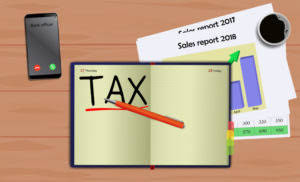
The journal entry is debiting inventory obsolete expenses and credit allowance for inventory obsolete. For example, if the inventory account balance was $3,100 and you had an allowance for an obsolete inventory contra-asset account of $100, the net inventory balance shows as $3,000. In other words, the contra-asset account gets subtracted from the related asset account. Managing obsolete inventory is like tackling a closet full of outdated fashion choices. It may seem overwhelming at first, but with the right approach, you can clear out the clutter and make room for new opportunities. By following the steps outlined in this article, you’ll be well-equipped to record a provision for obsolete inventory and set your business on the path unearned revenue to success.
- Likewise, this journal entry of disposal of obsolete inventory increases the total expenses on the income statement while decrease the total assets on the balance sheet.
- Learn about accounting for obsolete inventory with examples of obsolescence reserve journal entries.
- He has been the CFO or controller of both small and medium sized companies and has run small businesses of his own.
- The net balance for inventory is calculated as the sum of the cost of inventory and the allowance for outdated items.
- However, when a customer returns a product that was previously sold to them, you don’t need another temporary account to calculate COGS.
- Alternately, the business could have sold the merchandise for a profit, like $800 at an auction.
Accounting for Expired Inventory: A Detailed Guide

At the same time, the company knows that some of the inventory will not be sold and go obsolete. Management estimates the obsolete inventory base on the historical data and nature of product. The COGS calculation above illustrates a purchase return (e.g., defective products returned to the manufacturer). However, when a customer returns a product that was previously sold to them, you don’t need another temporary account to calculate COGS. The returned products are simply added back to inventory, resulting in a different ending inventory balance when recording the year-end adjustment.

Write Down of Inventory Journal Entries
- By this time, the obsolete inventory will be disposed, so it should be removed from the balance sheet.
- Not only does this reflect the actual value of your assets, but it also keeps you in line with regulatory requirements and can offer tax benefits.
- In this instance, the $800 in auction revenues is $700 less than the $1,500 in book value.
- In this case, we need to make the journal entry for disposal of obsolete inventory in order to remove those obsolete inventory goods from the balance sheet.
- That is why this can be done only when the amount is insignificant or immaterial.
- Recognizing inventory loss as an expense is vital for accurately calculating the cost of goods sold (COGS) and determining overall business profitability.
Even though it’s common for low quantities of inventory to need to be written off, the outmoded stock doesn’t need to make up a significant portion of the liabilities on the balance sheet. Ultimately, a journal entry for obsolete inventory is the way to go for recording the inventory cost Bakery Accounting which helps reduce obsolete inventory. We can make the journal entry for disposal of the obsolete inventory by debiting the loss on inventory disposal account and crediting the inventory account. When the actual inventory goes obsolete, the company has to quantify them in the dollar value and make the adjustment. By this time, the obsolete inventory will be disposed, so it should be removed from the balance sheet. The company has to remove the inventory and reverse the allowance for obsolete inventory.
- Then, we’ll go through a more practical example that includes things like purchase returns and shipping costs—real-life stuff.
- A company might use the gross profit method to estimate the value of its ending inventory for various reasons.
- If the write-down is small, some businesses will simply write it down using COGS.
- The inventory obsolete is the cost that will present on the income statement, it will reduce the company profit during the period.
- Accounting for all these elements ensures a comprehensive assessment of your inventory’s overall financial impact.
- It is maintained as a contra asset account, so that the original cost of the inventory can be held on the Inventory account until disposed of.
How to record journal entries for expired products
- However, based on the accrual basis, the expense should be allocated over time rather than recorded in only one specific period.
- This entry accounts for the $50 cost to dispose of the expired products, reducing your cash or bank balance.
- Keep in mind, this isn’t your final taxable income—you’ll still need to subtract operating expenses (like rent, utilities, marketing, etc.) from your gross profit of $540.
- It should be reviewed and adjusted regularly to reflect changes in the value of your obsolete inventory.
- Taking accurate inventory counts and properly recording provision for obsolete inventory are crucial for maintaining an accurate understanding of gross profit.
- If the business now disposes of the inventory for 600 in cash then this allowance for obsolete inventory can be released by creating the following journal.
- The company will try its best to minimize the inventory obsolete cost as it is the cost that does not provide any benefit to the customers or company.
For example, on December 31, we have obsolete inventory goods that have an original cost of $500. However, inventory obsolescence journal entry due to its obsolete state, its fair value on the market is only $100 as of December 31. Chartered accountant Michael Brown is the founder and CEO of Double Entry Bookkeeping.
Best Accounting Software for Multiple Businesses: Easy Comparison
Inventory is presented as the net balance which is the combination of inventory cost and allowance for obsolete. So when this journal reduces both accounts, it will not impact the total amount. The inventory obsolete is the cost that will present on the income statement, it will reduce the company profit during the period.

